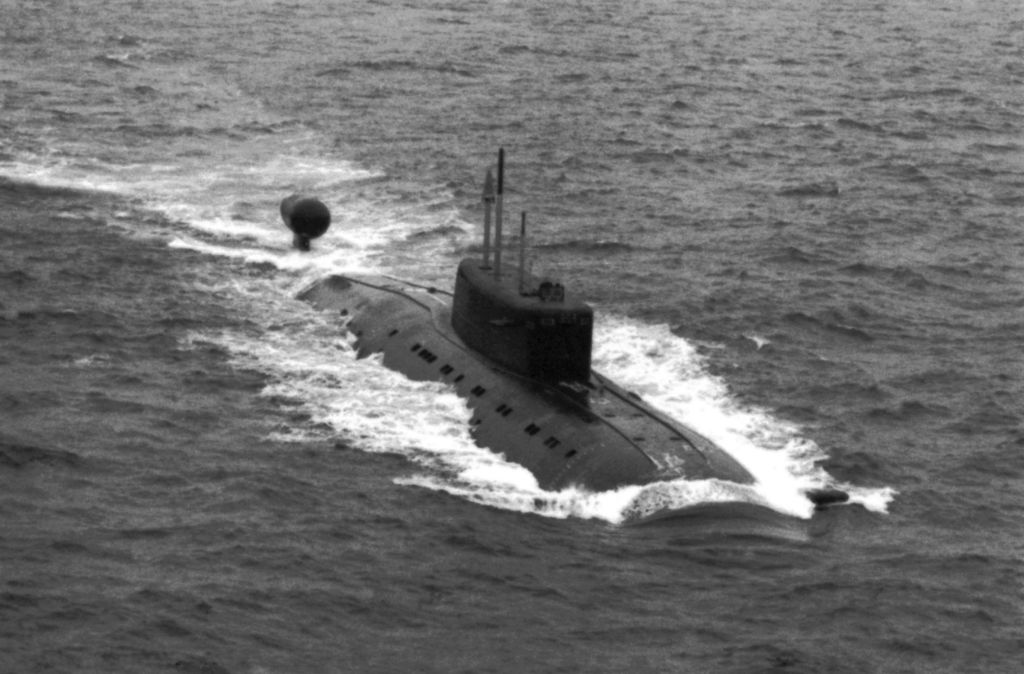Russian 'Titanium' Submarine Slammed Into a Navy Nuclear Attack Sub
On February 11, 1992, the USS Baton Rouge, a U.S. Navy nuclear submarine, collided with the Russian submarine Kostroma near Severomorsk during a surveillance mission under Operation Holy Stone.
What You Need to Know: On February 11, 1992, the USS Baton Rouge, a U.S. Navy nuclear submarine, collided with the Russian submarine Kostroma near Severomorsk during a surveillance mission under Operation Holy Stone.

-The incident occurred in international waters, with each side disputing the cause. The Baton Rouge sustained minor damage, while the Kostroma’s sail was dented.
-The collision caused political fallout, with Russia accusing the U.S. of continued Cold War-style spying. The event led to high-level diplomatic talks and U.S. Navy promises to reduce submarine surveillance.
-This marked the first of two submarine collisions between the U.S. and Russia in the early 1990s.
Cold War Echoes: U.S. and Russian Subs Collide in 1992 Near Severomorsk
After the collapse of the Soviet Union, the Americans were left without a great power rival.
But that didn’t mean US forces were comfortable relaxing – or blindly trusting the former Soviet Empire.
Instead, the US conducted surveillance operations, keeping an especially close eye on Russian nuclear submarines.
Russian submarine surveillance was conducted under a program called “Operation Holy Stone,” which included tapping Soviet submarine communication cables, recording the pattern of noises from Russian submarines, and observing submarine-launched ballistic missile tests.
On February 11th, 1992, the US Navy nuclear submarine USS Baton Rouge was participating in Operation Holy Stone, conducting surveillance near the Russian naval base Severomorsk.
At 8:16 pm local time, in international waters about 12 miles from the shoreline of Kildin Island, the Baton Rouge collided with Russian submarine B-276 Kostroma.
Exactly what happened is still in dispute. The American press asserts that the Baton Rouge had been monitoring wireless traffic between Russian bases. The Russian press, however, claimed that the two submarines were engaged in a cat-and-mouse game.
Several other Western sources corroborated the Russian version of events. Whatever is to blame, what we know is that the submarines did indeed collide.
Damage sustained
Both submarines were damaged.
The Kostroma’s sail was dented in her front section. The Baton Rouge fared well considering, suffering only some scratches, dents, and minor cuts on her port ballast tank. But the Baton Rouge was very fortunate in that the incident did not rupture her single hull – which would have compromised her pressure resistance.
The Baton Rouge was deactivated after the incident. The Kostroma was repaired and put back into service.
Aside from the physical damage to the submarines, the incident also caused political damage to the United States.
Russia was upset, naturally, and protested. The Pentagon acknowledged the collision, and then-Secretary of State James Baker met with Russian president Boris Yeltsin.
The Russians accused the US of continuing Cold War style spying. The US Navy was eventually convinced to stop with some of their submarine spying of Russian bases.
Although, just two years later, in March 1993, it all happened again. The USS Grayling collided with K-407 off the Kola peninsula.
The Grayling incident occurred while the submarine was tracking her Russian counterpart.
The collision was not serious, neither submarine sustained notable damage – but again the incident proved embarrassing for the United States.
Contemporary Equivalence
Tensions between the US and Russia are higher now than at any point since the conclusion of the Cold War, harkening to a time when Russia was the US’s primary enemy.
No of close calls between submarines have been reported, but multiple close encounters between US and Russian warplanes have been reported.
About the Author: Harrison Kass
Harrison Kass is the Senior Editor and opinion writer at 19FortyFive. An attorney, pilot, guitarist, and minor pro hockey player, Harrison joined the US Air Force as a Pilot Trainee but was medically discharged. Harrison holds a BA from Lake Forest College, a JD from the University of Oregon, and an MA from New York University. Harrison listens to Dokken.
From The Vault


